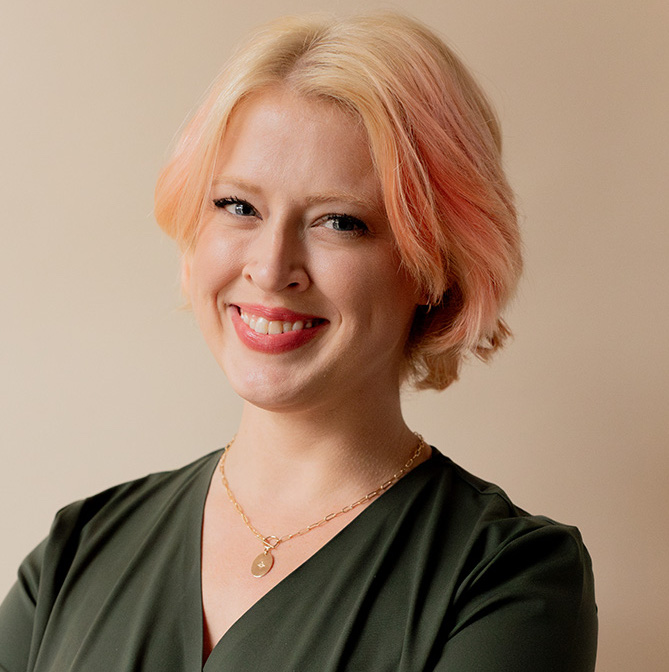
How An Adult ADHD Diagnosis Is Helping Me Reset My Life
When I received my ADHD diagnosis at 32 years old, I felt brand new.
I can explain. Imagine this: someone scoops a serving of spaghetti noodles into your outstretched hands. Then ladles on the marinara. As your hands are overflowing and messy, they offer you meatballs. And garlic bread. This is how I describe my brain; overflowing with exciting ideas to the point where they slip through the cracks, like spaghetti between your fingers. With this diagnosis, it felt like someone finally handed me a plate.
ADHD, or Attention Deficit Hyperactivity Disorder, is a neurodevelopmental disorder that has varying combinations of inattention, hyperactivity, and impulsivity (emotional dysregulation is being examined as well). It is most frequently diagnosed in childhood, especially in young boys. But as research begins to be more inclusive across gender, age, and ethnicity, the gaps that have existed are beginning to narrow. It presents uniquely across individuals, although it’s frequently boiled down to stigmatized examples in the media—like someone stopping mid-sentence to say, look, a squirrel!
“ADHD is not a damaged or defective nervous system,” writes Dr. William Dodson as an important clarification and destigmatization, “it is a nervous system that works well using its own set of rules.” Dr. Dodson, who has dedicated much of his practice to working with adulthood ADHD, also calls into question the “attention deficit” term. “Those with the condition don’t have a shortage of attention. They pay too much attention to everything.”
“ADHD is not a damaged or defective nervous system. It is a nervous system that works well using its own set of rules.”
Dr. William Dodson
Our attention is split between several things at once, so focus takes both physical and mental energy to manage. Luckily, my first thirty years were structured with school or work routines that held me accountable, so I didn’t have to expend as much energy creating accountability for myself. I got good grades and was a quiet, attentive little girl (at least in school), which is why an ADHD diagnosis never seemed outwardly obvious—until later in life.
Internally, my mind was always racing. I was often anxious, depressed, and wondering why I seemed to only have two modes: either ultra-motivated or burnt-out to the point of tears. I spent most of my life figuring I was broken.
When I transitioned to working from home full-time in early 2020, all that external motivation disappeared overnight. As the urgency of lockdowns and the novelty of working from home faded, I found myself working longer hours for less output and feeling ashamed for being so far behind. It became a party of burnout and overcompensation—depression and anxiety showed up (uninvited), too. Managing the spaghetti dinner in my hands was getting harder than ever.
That’s when I reached out to a psychiatrist; I knew I needed something new. And I discovered I was not alone.
“I seemed to only have two modes: either ultra-motivated or burnt-out to the point of tears. I spent most of my life figuring I was broken.”
“My old approach was just to power through everything,” says Chris Wang, the founder of the ADHD coaching platform Shimmer, who also received her ADHD diagnosis in adulthood after the transition to remote work. But, with ADHD, our motivation works differently than in a neurotypical brain and doesn’t always thrive with a “brute force” mentality. “Behavior change is changed through capability, opportunity, and motivation,” Chris says, citing the COM-B model for behavior change. “Everyone tries to do it just through motivation, just energy—but you need skills and opportunity.”
Solely harnessing our motivation and energy, Chris and I discussed, can feel like pushing at a door that says “pull.” Still, we push until we knock the door off its hinges and fall through to the other side, celebrating and exhausted. Without the proper support, we folks with neurodivergent brains might just break ourselves for the sake of a breakthrough.
A diagnosis, then, can help set us on the path toward working more strategically rather than harder. For Chris, research, coaching, and meeting other people with ADHD allowed her to find new ways to do things that presented difficulties in the past. Not every new system will work, she tells me, but knowing how others have navigated their ADHD offers plenty of innovative shortcuts to try out.
And learning more about those shortcuts has made the biggest difference for me so far. They’ve given me much more self-compassion and an opportunity to problem-solve wherever a weakness is interrupting my life. Instead of seeing failure (the messy dishes, the anxiety, the relentless self-criticism), I now see my “shortcomings” as symptoms of systems that are not working for me—because they were not built for me.
“I now see my ‘shortcomings’ as symptoms of systems that are not working for me—because they were not built for me.”
So, at 32 years old, I’m starting over and doing things unapologetically my way. There’s my robot vacuum to make cleaning fun, my self-care sticker reward system, and the Notion database I keep for filing away any thought I feel might be worth keeping. These shortcuts and systems are novel ways I keep my dopamine levels maintained while I’m pursuing longer-term goals. Hello, motivation! (ADHDers often have a high rate of dopamine reuptake, leaving our brains short on the neurotransmitter that helps with memory, learning, emotional regulation, and more. I love how this YouTuber breaks down dopamine, and especially her kind encouragement that “if you can’t make your own dopamine, store-bought is fine.” 🤗)
But focusing on dopamine alone, much like focusing on motivation alone, won’t bridge every gap between our difficulties and successes. It also doesn’t mean we have to get rid of all our symptoms.
“We always try to change [our worst symptoms] because we don’t want to be bad at things,” Chris told me. Instead, we can support ourselves by working with another person or creating a system (whether it’s digital or physical) that alleviates our weak points. In the end, she says, it’s about focusing on our strengths and being selective about which weaknesses will actually help us if they’re improved. Not “fixing” every last bit of ourselves.
For me, someone who’s often viewed my racing mind as a weakness, this framework changes my perspective. It’s not that I need to stifle my ideas and think less—it’s that my ideas deserve a system in which to be captured and filtered.
“Weaknesses and strengths only exist in context; there’s nothing that is an absolute strength or weakness. Things you might think are bad, might just be ‘bad’ because you’re in a situation where those things are not celebrated.”
Chris Wang, Founder + CEO of Shimmer
Then again, it’s also essential to understand where our value lies. “Weaknesses and strengths only exist in context; there’s nothing that is an absolute strength or weakness,” Chris explains. She notes that, for example, kids with lots of energy in a classroom can be a challenge for teachers but would be advantageous if we were hunter-gatherers. (Cue me getting excited about finding alllll the best berries).
And that’s when she said something that’s continued to stick with me: “Things you might think are bad might just be ‘bad’ because you’re in a situation where those things are not celebrated.”
Hearing that felt like I was handed a fork for my spaghetti plate. The diagnosis offered me a baseline understanding of how my brain works, yes, but now with the help of research and meeting people like Chris, I am gaining the tools to actually use my lovely mind in a more efficient, effective, and self-nurturing way. 🍝
Growing older and advancing in my career doesn’t mean I have to force myself to work longer and harder. Taking care of my home doesn’t have to reduce me to tears. I don’t have to do it all, all the time. Instead, I’m hitting restart on all the things I thought I knew and learning to love, support, and understand myself where I’m at.
Most of all, I’m building brand new systems that support me—instead of believing I’m a failure within the systems that don’t.
“I’m building brand new systems that support me—instead of believing I’m a failure within the systems that don’t.”
**This post is not sponsored, but the Shimmer team offered a discount for interested readers! Get 50% off your first month of ADHD coaching with code THEGOODTRADE. 💛
Emily McGowan is the Editorial Director at The Good Trade. She studied Creative Writing and Business at Indiana University, and has over ten years of experience as a writer and editor in sustainability and lifestyle spaces. Since 2017, she’s been discovering and reviewing the top sustainable home, fashion, beauty, and wellness products so readers can make their most informed decisions. Her editorial work has been recognized by major publications like The New York Times and BBC Worklife. You can usually find her in her colorful Los Angeles apartment journaling, caring for her rabbits and cat, or gaming. Say hi on Instagram!




